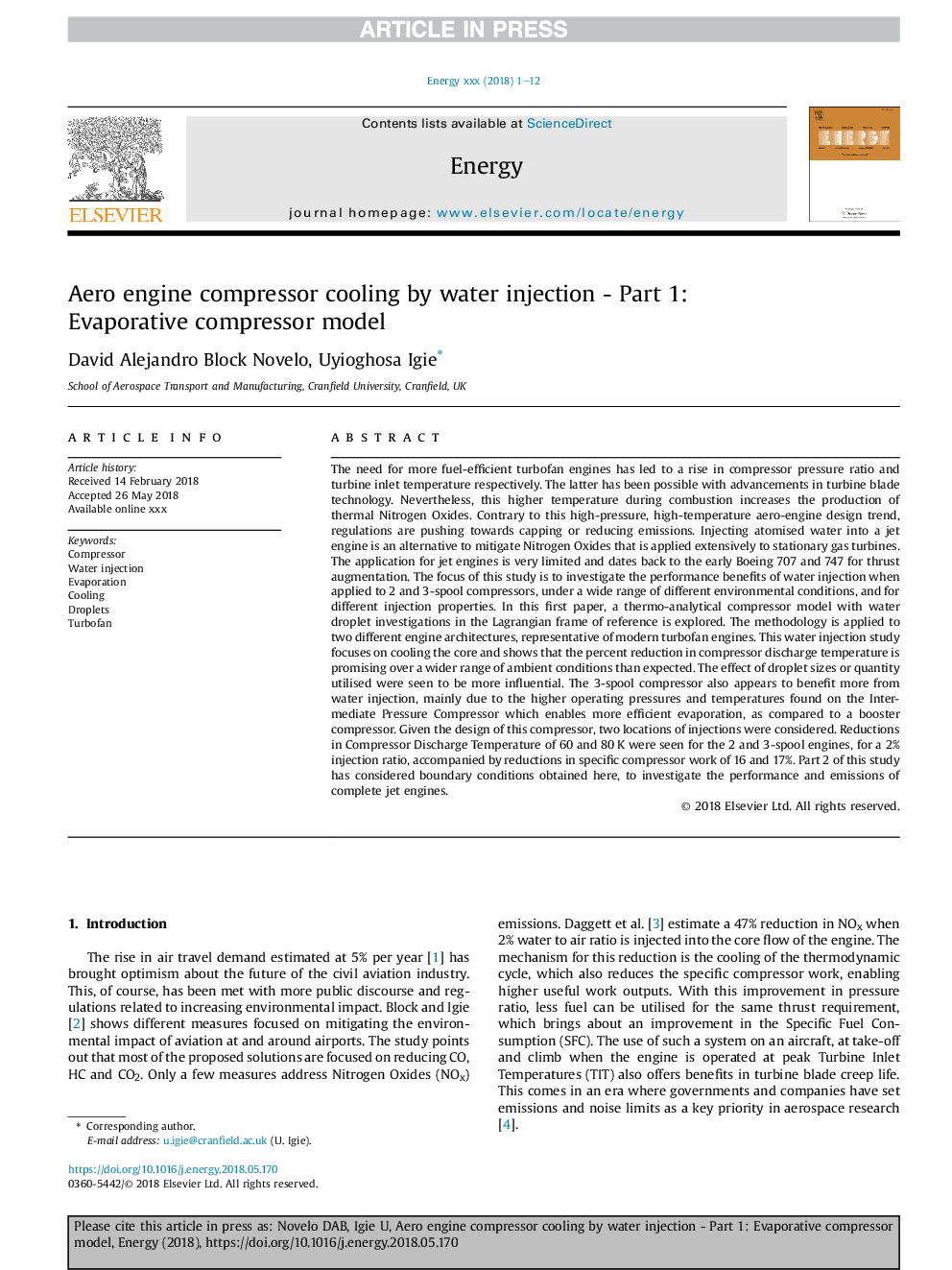| کد مقاله | کد نشریه | سال انتشار | مقاله انگلیسی | نسخه تمام متن |
|---|---|---|---|---|
| 11007392 | 1521390 | 2018 | 12 صفحه PDF | دانلود رایگان |
عنوان انگلیسی مقاله ISI
Aero engine compressor cooling by water injection - Part 1: Evaporative compressor model
دانلود مقاله + سفارش ترجمه
دانلود مقاله ISI انگلیسی
رایگان برای ایرانیان
کلمات کلیدی
موضوعات مرتبط
مهندسی و علوم پایه
مهندسی انرژی
انرژی (عمومی)
پیش نمایش صفحه اول مقاله

چکیده انگلیسی
The need for more fuel-efficient turbofan engines has led to a rise in compressor pressure ratio and turbine inlet temperature respectively. The latter has been possible with advancements in turbine blade technology. Nevertheless, this higher temperature during combustion increases the production of thermal Nitrogen Oxides. Contrary to this high-pressure, high-temperature aero-engine design trend, regulations are pushing towards capping or reducing emissions. Injecting atomised water into a jet engine is an alternative to mitigate Nitrogen Oxides that is applied extensively to stationary gas turbines. The application for jet engines is very limited and dates back to the early Boeing 707 and 747 for thrust augmentation. The focus of this study is to investigate the performance benefits of water injection when applied to 2 and 3-spool compressors, under a wide range of different environmental conditions, and for different injection properties. In this first paper, a thermo-analytical compressor model with water droplet investigations in the Lagrangian frame of reference is explored. The methodology is applied to two different engine architectures, representative of modern turbofan engines. This water injection study focuses on cooling the core and shows that the percent reduction in compressor discharge temperature is promising over a wider range of ambient conditions than expected. The effect of droplet sizes or quantity utilised were seen to be more influential. The 3-spool compressor also appears to benefit more from water injection, mainly due to the higher operating pressures and temperatures found on the Intermediate Pressure Compressor which enables more efficient evaporation, as compared to a booster compressor. Given the design of this compressor, two locations of injections were considered. Reductions in Compressor Discharge Temperature of 60 and 80â¯K were seen for the 2 and 3-spool engines, for a 2% injection ratio, accompanied by reductions in specific compressor work of 16 and 17%. Part 2 of this study has considered boundary conditions obtained here, to investigate the performance and emissions of complete jet engines.
ناشر
Database: Elsevier - ScienceDirect (ساینس دایرکت)
Journal: Energy - Volume 160, 1 October 2018, Pages 1224-1235
Journal: Energy - Volume 160, 1 October 2018, Pages 1224-1235
نویسندگان
David Alejandro Block Novelo, Uyioghosa Igie,